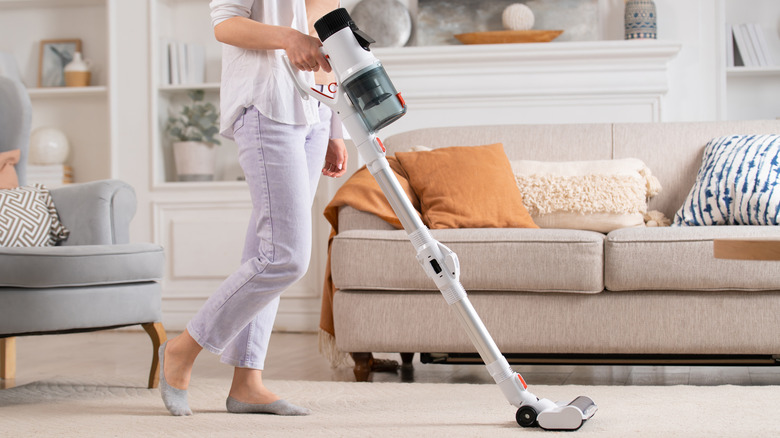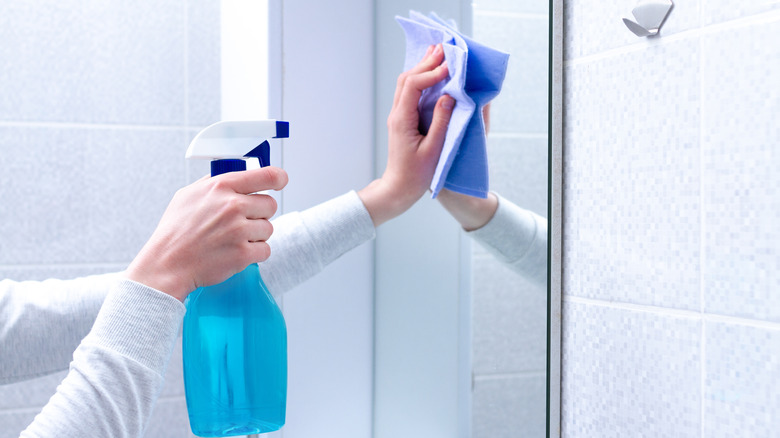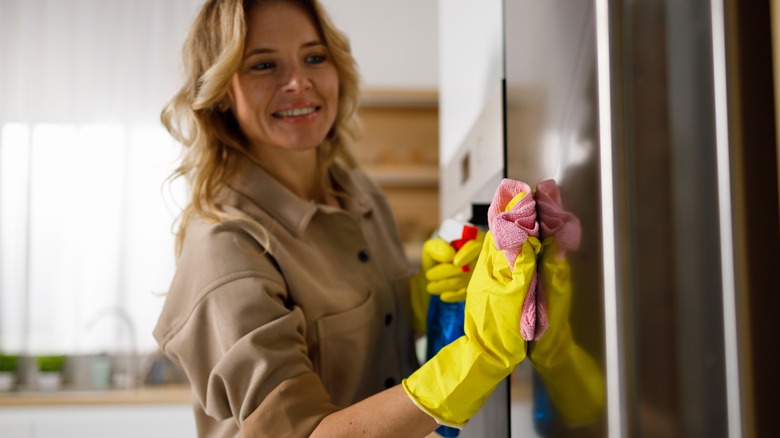What Is 'Trigger Cleaning' And How Can It Help Simplify Your Routine?
It can feel like keeping your house clean is a never-ending effort punctuated with marathon cleaning sessions for periods when life gets hectic and your house reflects that, or constant daily tasks that you have to remember to add to your already packed schedule. However, there's an easy way to sneak some bursts of cleaning into your daily life that won't require you to add to your mental load or revamp your existing routines. We're talking about 'trigger cleaning' — and here's the scoop on how to incorporate it into your days.
Trigger cleaning is based on the concept of 'habit stacking', popularized in the book "Atomic Habits" by James Clear. When implementing habit stacking, you identify particular habits that already exist in your life and find ways to pair them with habits you're trying to cultivate. This simple stacking trick makes it much easier to incorporate the new habits into your routine, since you're building on something you already do rather than starting from scratch.
Apply this concept to a home cleaning context and you get trigger cleaning. Importantly, you don't want to think of it in terms of which cleaning tasks you can add to or switch up in your current cleaning schedule — chances are, the reason you're looking for a new solution is because you need a way to simplify what you've been trying to do. Instead, analyze your entire day's schedule and select a few lifestyle habits that are deeply ingrained. Then, pair them with a cleaning task.
Tying habits to time and location
James Clear identifies five triggers for habit stacking: time, location, preceding event, emotional state, and other people. These are helpful to keep in mind when trying to identify ingrained habits to build upon. Although, perhaps keep emotional state out of the equation for trigger cleaning — the last thing you want to do when you're feeling blue is force yourself to vacuum.
Time and location are the two easiest triggers to spark trigger cleaning, and they pair very well together. There are likely things in your normal routine that you do every day without fail, at roughly the same time and in roughly the same place. We're thinking of habits like brushing your teeth or eating meals. Keep things as low burden as possible to increase the odds of trigger cleaning success, and pair cleaning tasks that need to get done in roughly the same areas where you're performing the existing habits.
For example, keep a few cloths and a bottle of your preferred all-purpose cleaning product under your bathroom sink. After brushing your teeth every morning, quickly wipe down the counters and sink. After brushing your teeth in the evening, wipe down your mirror. It'll add a mere minute or two of cleaning to your routine, and you'll be left with a cleaner bathroom without much added effort. Similarly, pair your morning and evening meal with either loading or unloading the dishwasher, and you'll have effortlessly tackled that pesky task.
Linking tasks to preceding events
Another one of the triggers Clear identifies that works very well for trigger cleaning is preceding events. It's even better when you can incorporate a social component into these triggers, bringing in other members of your household to help. After all, many hands make light work. Perhaps you and your partner spend 10 minutes catching up on the couch when you both finish work for the day. Why not follow that up by tidying the living room together for five minutes before you start on whatever else you have planned? You can continue chatting while doing so, adding a social element, and the quick daily cleaning session will ensure your living room never gets completely out of control. This tidy baseline makes it much easier to do lengthier tasks like vacuuming and dusting later.
Using the preceding event trigger can also be an ideal way to pair things you do less regularly with cleaning tasks that likewise don't require daily frequency. Here's an example — perhaps you sit down every Sunday morning to write out your weekly meal plan and grocery list. Follow that habit by wiping down the fridge interior and exterior, throwing out any expired food or leftovers you know won't get eaten, and taking out the kitchen trash. This way you cross a few tasks off your list while also ensuring you have a tidy space to bring a new week's batch of groceries into.


